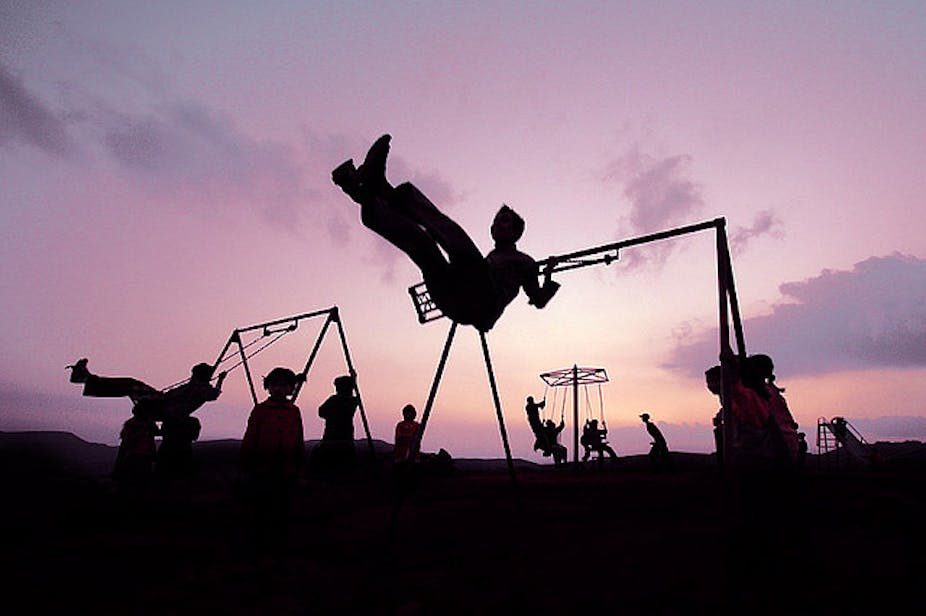Climate change has been widely recognised by leading public health organisations and prestigious peer reviewed journals as the the biggest global health threat of the 21st century.
A recently released report, commissioned by 20 of the most vulnerable countries, highlights the size of the threat: climate change is already responsible for 400,000 deaths annually, mostly from hunger and communicable disease. And our carbon-intensive energy system causes another 4.5 million deaths annually, largely due to air pollution.
Along with the old and disadvantaged, children are particularly vulnerable to the negative effects of climate change. Children suffer around 90% of the disease burden from climate change.
What can our children expect if we continue the way we’re going?
Even if current international carbon reduction commitments are honoured, the global temperature rise is predicted to be more than double the internationally agreed target of 2°C. Humanity continues to pour record amounts of CO2 into the atmosphere. It has been argued that, if this continues, reasonable hope of avoiding dangerous climate change will have passed us by in a mere 16 years.
The impact climate change has on children born today may well be decided before they can vote on it.
Climate change will affect global agricultural productivity and food security, with 25 million additional children predicted to be malnourished by 2050. The estimate of an additional 200 million “environmental refugees” by 2050 has become the widely accepted figure. This means, if we do not intervene, millions of children will suffer the adverse mental, physical and social health impacts associated with forced migration.

The intensity and frequency of weather extremes will increase. This will result in increased child illness and death from heat waves, floods, storms, fires and droughts. The increased incidence and severity of floods, for instance, will increase child illness and death from diarrhoea and other water born diseases.
We’re likely to see more asthma, allergies, disease and other adverse health outcomes that disproportionately affect children. A recent report observed that climate change may make serious epidemics more likely in previously less-affected communities. This report also found that changing climate conditions have the potential to stimulate the emergence of new diseases and influence children’s vulnerability to disease.
Australians will not be immune to these changes.
It has been estimated that climate change will mean that Australian children will face a 30% to 100% increase across selected health risks by 2050. Indeed, if we fail to act, future generations of Australians may face a three- to 15-fold increase in these health risks by 2100.
Because their brains are still developing, children are particularly vulnerable to toxic levels of stress. Increased exposure to trauma and stress because of climate change is likely to affect children’s brain development and mental health. Children surveyed six months after the 2003 bushfires in Canberra, for example, showed much higher rates of emotional problems. Nearly half had elevated symptoms of post-traumatic stress disorder.
Research has also found that prolonged exposure to adverse weather conditions is associated with increased child and adolescent psychological distress over time. As global warming drives local and regional change to home environments, children, like many non-human animals will experience place-based distress (known as solastalgia) at the unwelcome changes.

We are only beginning to understand the impacts that climate change will have on children’s physical and mental health. More research at the regional and local levels is desperately needed so we can adequately understand, prepare for and adapt to the impacts of climate change.
James Hansen from NASA recently argued that:
Children cannot avoid hearing that the window of opportunity to act in time to avoid dramatic climate impacts is closing, and that their future and that of other species is at stake. While the psychological health of our children needs to be protected, denial of the truth exposes them to even greater risk.
We must listen to the fears and concerns of children and young people and include their voices in discussions about climate change.
The existence of cost effective ways to reduce climate change means there is no excuse for inaction. Climate change and the carbon-intensive energy system are currently costing 1.7% of global GDP and are expected to reach 3.5% by 2030. This is much higher than the cost of shifting to a low carbon economy.
Right now the science is telling us that we are not doing enough.
As children are innocent and non-consenting victims of climate change, adults have an ethical obligation to do everything possible to prevent further damage to their ability to thrive in the future. To do otherwise is to ignore the very thing many of us see as the most important reason for living.

